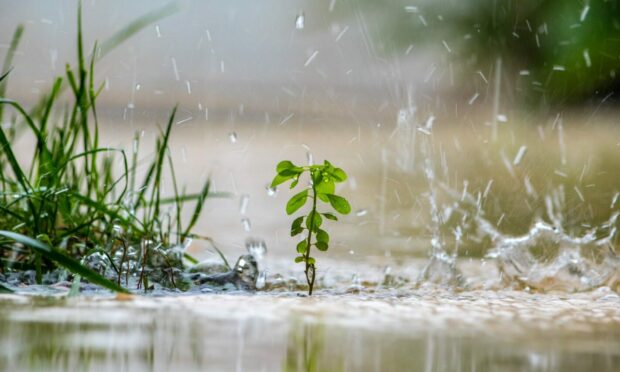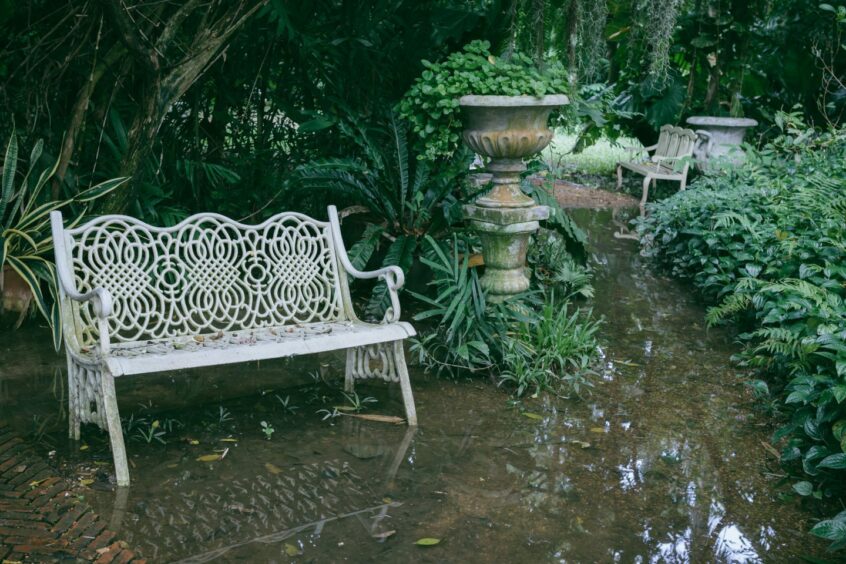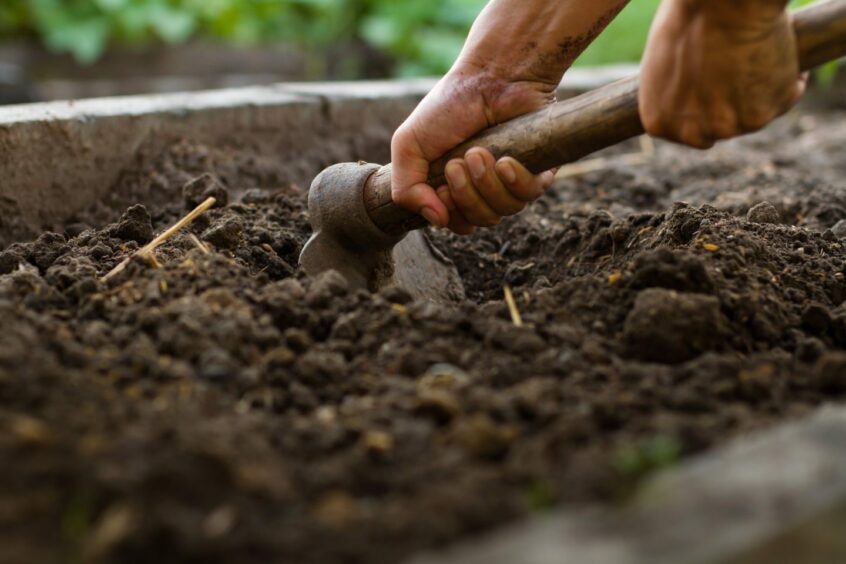That was some amount of rain which hit our area the other week. Of course there are more significant concerns when we’re on the receiving end of such weather with the risk of flooding and the resulting danger to life and property.
In the garden, it presents us with possibly our major challenge over the winter months. Gardening in wet weather.
It’s raining, and raining ….
Gardening in the rain can be pretty miserable so in most cases we’ll simply choose not to bother and save going outdoors for another day.
At the moment it just seems to be constantly wet. Even if there is a day we’re spared a downpour, the damage is already done as the ground is too wet for us to work on it.
Even though we’re at the time of year where plant growth has slowed right down, life in the garden still goes on.
The garden can’t wait
It won’t wait until the next nice day for us so to do the many jobs still to be done at this time of year.
We need to get those dahlias lifted or the winter wet could rot the tubers and we’ll lose them all.
We’re also getting towards the end of the bulb planting season. I’ve got a few hundred tulips needing planted and if I don’t get them in the ground soon, it’s going to be too late.
I’ll be gutted if the spring display in my garden doesn’t feature tulips and I’m breaking out in a sweat thinking about the money I’ll be wasting.
It’s alright saying “just get on with it” but we need to be careful and not damage the soil. If you work on wet soil you can do more harm than good.
Treading on wet soil can cause compaction, making it difficult to work with. Oxygen is squeezed out of the soil, harming the plant roots.
The danger of compacted soil
Compacted soil then becomes brick hard, and further rain will run off, causing flooding issues. Water will be unable to penetrate that solid layer, denying roots a much needed drink when they need it .
Standing and working off a board can be a help. This spreads your weight across the soil, and not just at the narrow point of the bottom of your boot.
Watch out how you make your way around your garden too. Similar compaction problems can occur if you regularly take the same route over your lawn.
This can potentially cause drainage issues and the grass will wear away so much quicker when wet, leaving an unsightly, muddy track.
Maybe this is a clue a permanent path is required, another nice wee job to do over the winter.
Indoor jobs for rainy days
The smart folk amongst us will be saving up all the indoor jobs for these rainy days.
This is where a shed or glasshouse comes in really handy.
If your glasshouse is anything like mine it will probably be needing a good clean out by now.
The last few weeks mine has been packed full of gladioli and dahlias, drying off as part of the process of getting them ready for winter storage.
When brushing off the remaining soil, as hard as I tried to keep this in the wheelbarrow I still managed to make a mess.
I must get this cleaned up along with the pile of pots that are gathering up in the corner.
Tend to your garden tools
Winter is also a good time for assessing the condition of your tools. Hoes, spades, shears, all will benefit from a good clean, oil and sharpen, getting them in perfect condition for when they are needed again next spring.
Labels can be reused again next year so no need to be wasteful by throwing them out.
I always write in pencil so taking time to rub them clean just now won’t slow me up come seed sowing time.
Once that’s all sorted you have a choice to either wash down your glasshouse now, if you have one, or leave it until later.
I prefer waiting. If it stays this damp for the rest of the winter there’s no doubt there will be as many dirt splashes and green mould needing cleaned off again.
A gardener’s work is never done
Then again, if this wet weather keeps up it may be best to get it ticked off the list, there’ll be other jobs waiting.
The life of a gardener keeps you on your toes!
One last thing to think about in the winter wet is the plants growing in containers.
If you can’t get them under cover, the next best thing is to ensure they are sitting on the wee feet you can get for pots.
This will ensure that the drainage holes at the bottom of the pot is clear and any excess water can drain away.




Conversation